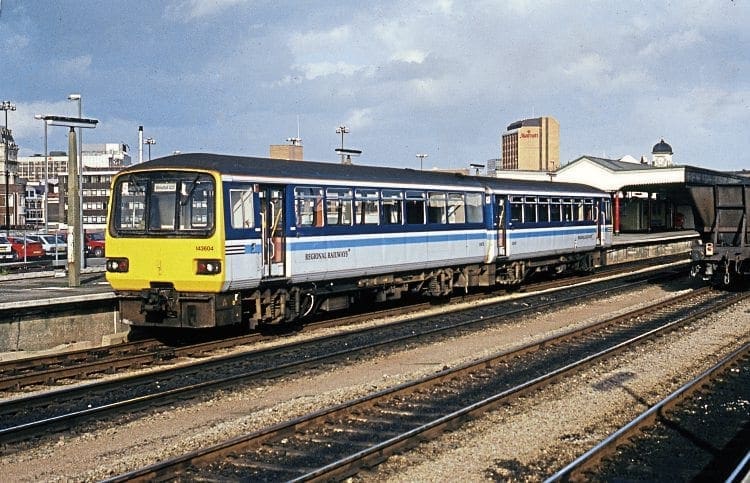Gary Boyd-Hope concludes his profile of the ‘Pacers’ and their antecedents with a look at the Walter Alexander-built Class 143s and 144s, and talks to people within the industry about the important role the type has played in keeping Britain’s passengers moving.
AFTER the introduction of the BRE-Leyland Class 141s in September 1983, and the subsequent order of the first 50 Class 142s in January 1984, one could be forgiven for thinking the Derby/Workington partnership had the light railbus market pretty well cornered.
After all, they had effectively developed the concept from the prototype LEV1 into something cheap and workable, if not necessarily desirable or comfortable.
Yet BRE-Leyland did not have the monopoly on the manufacture of the ‘Pacers’. Even as the Class 141 design was evolving into the ‘142s’, British Rail invited three other bus builders – Metro-Cammell of Washwood Heath, Walter Alexander of Falkirk and Marshalls of Cambridge – to submit their own designs for a lightweight multiple unit based upon the ‘141s’, and tender for their construction.
Monthly Subscription: Enjoy more Railway Magazine reading each month with free delivery to you door, and access to over 100 years in the archive, all for just £5.35 per month.
Click here to subscribe & save

The contract for 25 two-car units was thus awarded jointly to Walter Alexander and Andrew Barclay of Kilmarnock on January 16, 1984 at the same time BRE-Leyland won the Class 142 order. Alexander would build the bodies and Barclay the underframes (to the Derby design), final assembly being carried out in Kilmarnock.
The new units became the Class 143s, and while clearly of the same family as the BRE-Leyland products, they were distinctly different, especially in terms of aesthetics. Like the Workington-built units the Class 143’s aluminium bodies were constructed using existing road bus panels, this time from Alexander’s P-type.
A more rounded cab front was fitted, but again employing a three-window windscreen, with destination box in the centre window.
Each car measured 51ft 0½in, the same as the Class 142, but were slightly narrower at 8ft 10½in, compared to the 9ft 2¼in of the ‘142s’.
Read more and view more images in the December issue of The RM – on sale now!




